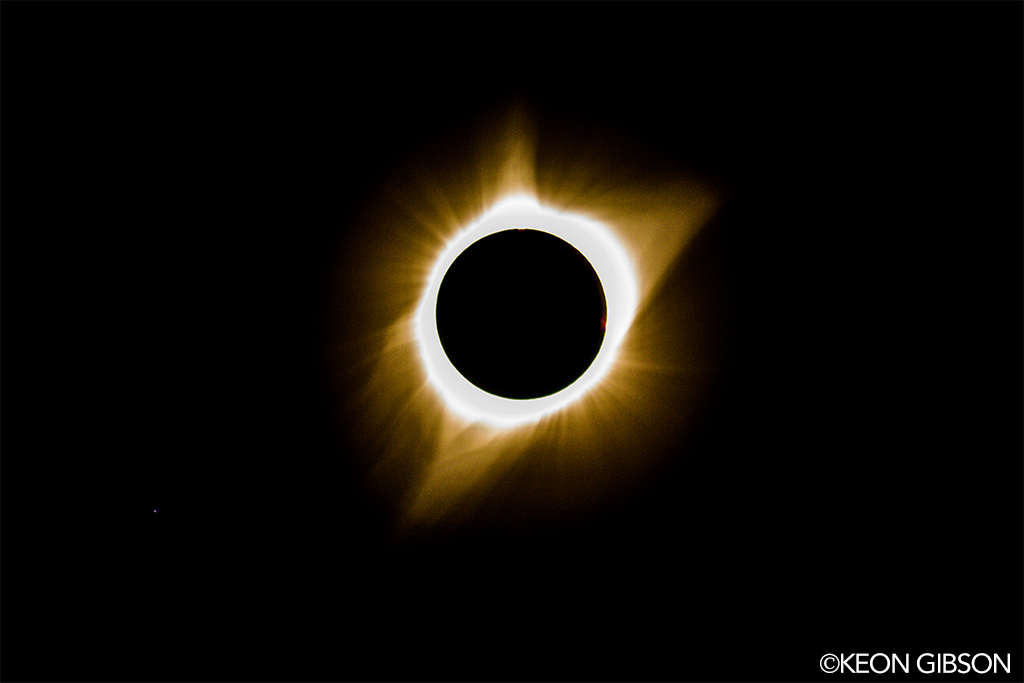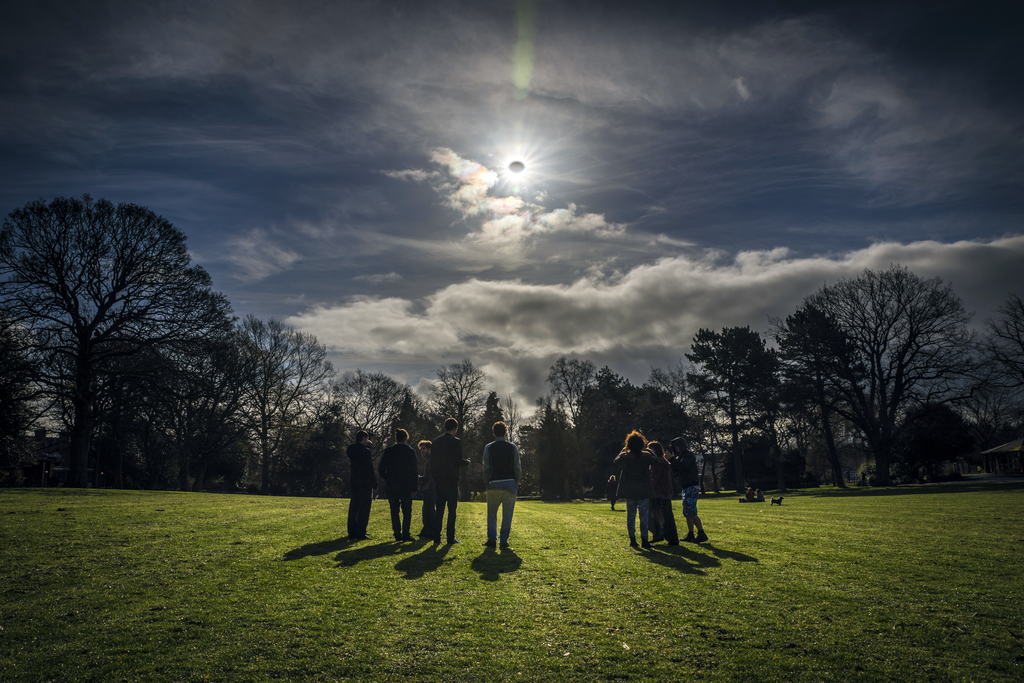Eclipse Imagery Along Path of Totality

Carbondale, IL - The Eclipse Ballooning Project inflating high altitude balloons in Saluki Stadium during the Aug. 21, 2017, total solar eclipse. Credit: NASA/Joy Ng
Carbondale, IL - A timelapse video of the Eclipse Ballooning Project in Saluki Stadium during the Aug. 21, 2017, total solar eclipse. Credit: NASA/Joy Ng

Carbondale, IL - The SUNlab from Lunt Solar Systems supplied high resolution images to NASA's live stream during the Aug. 21, 2017, total solar eclipse. Credit: NASA/Joy Ng

Carbondale, IL - Crowds in Saluki Stadium during the Aug. 21, 2017, total solar eclipse. Credit: NASA/Joy Ng

Carbondale, IL - Crowds in Saluki Stadium during the Aug. 21, 2017, total solar eclipse. Credit: NASA/Joy Ng

Carbondale, IL - Scientist Padma Yanamandra-Fisher from the Space Science Institute takes high resolution images of the solar corona with a CATE telescope during the Aug. 21, 2017, total solar eclipse. Credit: NASA/Joy Ng

Carbondale, IL - A partial eclipse seen in a solar funnel attached to a telescope during the Aug. 21, 2017, total solar eclipse. Credit: NASA/Joy Ng

Casper, WY - Scientists from the National Center for Atmospheric Research check their instruments before the Aug. 21, 2017, total solar eclipse in Casper, Wyoming. Some of these instruments were part of NASA-funded projects to collect data on the Sun’s outer atmosphere, the corona, during the Aug. 21 solar eclipse. Credit: NASA/Sarah Frazier

Casper, WY - Scientists from the National Center for Atmospheric Research check their instruments before the Aug. 21, 2017, total solar eclipse in Casper, Wyoming. Some of these instruments were part of NASA-funded projects to collect data on the Sun’s outer atmosphere, the corona, during the Aug. 21 solar eclipse. Credit: NASA/Sarah Frazier

Casper, WY - Pinholes project images of the Sun in the shape of the European Space Agency logo before the Aug. 21, 2017, total solar eclipse in Casper, Wyoming. Credit: NASA/Sarah Frazier

Casper, WY - Scientists from the National Center for Atmospheric Research prepare for the Aug. 21, 2017, total solar eclipse in Casper, Wyoming. Some of their work was part of NASA-funded projects to collect data on the Sun’s outer atmosphere, the corona, during the Aug. 21 solar eclipse. Credit: NASA/Sarah Frazier
Casper, WY - Scientists and spectators alike prepared for the total solar eclipse on the morning of Aug. 21, 2017, in Casper, Wyoming. Many of the instruments in the foreground were part of NASA-funded projects to collect data on the Sun’s atmosphere, the corona, during the Aug. 21 solar eclipse. Credit: Sarah Frazier

Madras, OR - NASA Goddard scientists make their final preparations before they conduct a test of a polarization camera during the Aug. 21 total solar eclipse. The partial eclipse is visible on the computer screen. Credit: NASA/Lina Tran
Credits
Please give credit for this item to:
NASA's Goddard Space Flight Center
-
Photographers
- Sarah Frazier (ADNET Systems, Inc.)
- Joy Ng (USRA)
- Kathalina Tran (KBR Wyle Services, LLC)
Release date
This page was originally published on Tuesday, August 29, 2017.
This page was last updated on Wednesday, May 3, 2023 at 1:47 PM EDT.
![Music Credit: “Corals Instrumental” by Marc Burh [GEMA], Marek Nichel [GEMA] via Universal Production MusicAdditional photographs and footage: Unsplash, Videvo](/vis/a010000/a014500/a014557/14557_EclipsePhotoTips_Thumbnail.png)


![Watch this video on the NASA Goddard YouTube channel.Complete transcript available.Music credit: "Back From The Brink" by Daniel Gunnar Louis Trachtenberg [PRS], “Hive Mind” by Ben De Vries [PRS] and Cam Tigre [PRS] from Universal Production MusicAdditional footage: NASA EDGESound effects: Pixabay](/vis/a010000/a014500/a014532/Thumbnail.jpg)
![Watch this video on the NASA Goddard YouTube channel.Complete transcript available.Music credit: "Creativity" by Max van Thun [GEMA] from Universal Production Music.](/vis/a010000/a014400/a014427/Thumbnail_01.jpg)